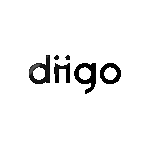The digital marketing landscape is perpetually evolving, with new tools and methodologies promising to unlock unprecedented growth. In this arena, a new name has begun to generate buzz: Helonia Neue. Touted not just as another keyword research tool but as a holistic strategic platform, its core philosophy revolves around the ambitious “1000 Keyword” strategy. But what exactly is it, and does scaling your keyword targets to a thousand truly hold the key to dominating search engine results pages (SERPs)?
This article delves into the concept of Helonia Neue, exploring its proposed methodology, its potential benefits, and the critical calculations and cautions every marketer must consider.
What is Helonia Neue?
Helonia Neue is presented as a next-generation SEO intelligence suite. Moving beyond simple keyword volume and difficulty metrics, it allegedly uses a sophisticated blend of AI, natural language processing (NLP), and user intent mapping to analyze and manage a portfolio of 1,000 keywords per project or website.
The name itself is suggestive:
- Helonia: Potentially derived from “helon” (a core or foundation) or a play on “heuristic,” implying a system that learns and adapts.
- Neue: German for “new,” signaling a fresh, modern approach to a classic problem.
Its purported power isn’t in finding 1,000 random keywords, but in identifying a dense network of semantically related, long-tail, and question-based keywords that orbit a core topic. The goal is to establish absolute topical authority, making your site the undisputed expert in your niche in the eyes of search engines like Google.
The “1000 Keyword” Methodology: Depth Over Breadth
Traditional SEO often focuses on a handful of high-volume, high-competition “head terms.” Helonia Neue flips this model. The strategy is built on several key pillars:
- Topical Clustering: Instead of targeting keywords in isolation, Helonia Neue supposedly groups them into clusters around a central pillar topic. A single piece of cornerstone content (a pillar page) is then supported by dozens of hyper-focused cluster pages (blog posts, FAQs, product pages) each targeting a specific long-tail keyword from the cluster.
- Intent Fulfillment: The platform would classify all 1,000 keywords by user intent—Informational, Commercial, Navigational, or Transactional. This ensures the content created matches exactly what the user is searching for, drastically improving engagement metrics.
- Difficulty & ROI Scoring: Each keyword is not just assessed by search volume but by a custom “Opportunity Score” that balances estimated traffic potential against the realistic effort required to rank.
The Helonia Neue Calculation: Estimating the Impact
Before embarking on such a vast project, a rational calculation is necessary. Here’s a simplified model of how you might estimate the potential traffic from a 1000-keyword strategy.
The Formula:Estimated Monthly Traffic = Σ (Keyword Volume_i * Projected CTR_i)
Σ(Sigma) means the sum of all calculations for each keyword (i).Keyword Volume: The monthly search volume for each specific keyword.Projected CTR: The projected Click-Through Rate for your ranking position (e.g., Position 1 = ~28%, Position 3 = ~10%, Position 10 = ~2%).
A Practical Example:
Imagine your cluster of 1,000 keywords has an average monthly search volume of 50 and you project to rank on average on page 2 (Position #7, with an estimated CTR of 3.5%).
- Traffic per Keyword = 50 searches/month * 3.5% = 1.75 visits/month.
- Total Estimated Traffic = 1.75 visits/keyword * 1,000 keywords = 1,750 visits/month.
This is a conservative estimate. The power of Helonia Neue’s approach would be that by creating interconnected, high-quality content, you wouldn’t just rank for one keyword per page. A single cluster page might eventually rank for dozens of variations, pushing the actual traffic far higher than this basic model suggests. The key is the aggregation of many small victories into a significant whole.
FAQs
Q1: Is Helonia Neue a real tool I can buy?
A: As of the last knowledge update in 2024, “Helonia Neue” appears to be a conceptual or hypothetical platform used by thought leaders to describe an advanced, AI-driven approach to SEO. It serves as a useful model for what the future of keyword strategy could look like. Always be cautious of any product using this exact name, as it could be misleading.
Q2: Won’t creating content for 1,000 keywords lead to thin, low-quality content?
A: Absolutely, if done incorrectly. The philosophy behind Helonia Neue is the opposite. It’s about covering a topic so thoroughly that you create a web of high-quality, interlinked content. One pillar page might be 3,000 words, and its 20 supporting cluster posts might each be 800-1,500 words. Quality and depth are paramount.
Q3: How long would it take to see results from this strategy?
A: SEO is a long-term game. While you might see early gains for lower-competition keywords within 3-6 months, it could take 12-24 months to fully develop the content, earn backlinks, and see the full domain authority boost that powers this strategy.
Q4: My business is in a small niche. Are there even 1,000 relevant keywords?
A: This is a common concern. The power of a tool like Helonia Neue would be in its ability to find latent semantic keywords, questions, and long-tail variations you haven’t considered. For most niches, even specialized ones, a deep dive uncovers far more opportunities than initially apparent.
Q5: How is this different from what SEMrush or Ahrefs does?
A: Tools like SEMrush and Ahrefs are exceptional for providing the data (volume, difficulty, keywords). The Helonia Neue concept describes a platform that ingests that data and uses AI to automatically formulate the strategy—clustering keywords, assigning intent, and even suggesting content structure.
Crucial Caution: A Reality Check
While the “1000 Keyword” strategy is compelling, blind adoption is dangerous.
- Quality is Non-Negotiable: Churning out 1,000 low-value pages for the sake of hitting a number will harm your site. Google’s algorithms (like Helpful Content Update) punish shallow content.
- Resource Intensive: This strategy requires a massive investment in content creation, website structure, and ongoing optimization. It’s not for a brand-new blog with a single writer.
- The Concept, Not the Name: Focus on the underlying principles—topical authority, user intent, and long-tail aggregation. You can apply this strategy using existing tools (Ahrefs, SEMrush, Moz, MarketMuse) through meticulous manual analysis. You don’t need a mythical “Helonia Neue” to succeed.
- Beware of Imposters: Any service or software aggressively marketing under the exact name “Helonia Neue” should be vetted extremely carefully, as it is primarily a conceptual term.
Conclusion
The “Helonia Neue” concept, whether it exists as a tangible product or not, represents the maturation of SEO. It champions a move away from silver-bullet thinking and towards a comprehensive, authority-building strategy. By targeting a vast network of closely related keywords with exceptional content, businesses can build a sustainable and formidable organic traffic engine.
The takeaway isn’t to find a tool called Helonia Neue, but to embrace its philosophy: Go deep, not just wide. Calculate the opportunity, proceed with caution regarding quality, and build your content empire one strategically chosen keyword at a time.











